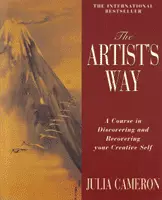Short answer – be an artist.

Me? An Artist?
You're an artist! No, really, you are. You wouldn't be reading this e-newsletter if you weren't looking for ideas. Being "indispensable" in today's economy requires you to do something different, to distinguish yourself from others, to do work that matters – in short, to be an artist in your job and view your work as art. In fact, that's the theme of Seth Godin's Linchpin: Are You Indispensable?. And to make art, what is needed? Creativity. I'm frequently asked "How do you always come up with new ideas?" Well, as consultants, it's what my associates and I do – we come up with ideas to solve our clients' problems! There are also some techniques I've developed to make sure I always have ideas, especially those used for writing the monthly newsletter – so I'm going to share some of them with you. In this e-newsletter, I'm using myself and my e-newsletter writing as the example to illustrate my points. Rest assured, these ideas are not limited to writing – they apply equally to any other tasks involving expression, including:
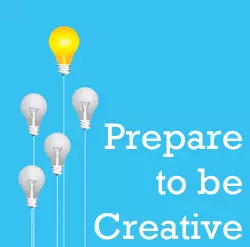
- Preparing and delivering a presentation.
- Giving a speech.
- Developing a clever tagline.
- Modifying your "elevator pitch" to better describe your company and its products or services.
- Coming up with new ways to differentiate your company from its competitors.
- Creating a marketing and advertising plan to launch a new product or service.
Now, let's get started.
Prepare To Be Creative
As counter intuitive as it may seem, preparation both develops and jump starts creativity. How? By using these preparation techniques, you'll become more alert to what's going on around you, and thus develop your creativity. These same techniques give you an inventory of ideas you can go to, when you need some.
Preparation techniques I've used include ...
- Read – Read a lot AND widely!

- Library of books – Have a great library of books, or else have access to a great library of books!
- Affirmation cards – Have a deck of affirmation cards – these are typically very creative, and contain positive, uplifting messages.
- Talk with others – Talk with others a lot. Make it a point to meet interesting people, even if there's little or no obvious business benefit at the time.
- Listen to a speaker – My Rotary club, Greensboro Rotary, typically has very interesting speakers on timely topics, so I go, pay attention, and even jot down items I want to remember or do. Once back in office, these go into my Idea Bins.

- Store your ideas – Store ALL ideas ASAP! What's the value of an idea? It can be hard to assess at the moment – it could turn out to be a real winner. So, use your smartphone to
- record a voice note or send an email to yourself, or keep an idea pad or journal close by at all times.
- Keep a journal – Two forms of journaling are effective, one structured, the other free-form.
- An electronic journal where I keep a record of key events, highs and lows, and notes of appreciation for each day, and it has the incredible benefit of being instantly searchable. (Since I created this in early 2006, I have logged well over 3,000 distinct items!)
- My Moleskine journal is where I do stream-of-consciousness writing or doodling.
- Idea bin – I clip, print, highlight, note, and store emails, articles, blogs, and book excerpts – and I have filled several bins with these. Ever need an idea? Just go here and rummage.
What To Do When You're Blocked
Let's say you've used the preparation techniques listed above, and still come up empty. What then? Maybe you're trying too hard – creativity can't be forced, though it can be coaxed. Perhaps one of these techniques will do the trick ...
- Go for a walk, hit the gym, take a shower – all very helpful.
- Do something fun - go out for ice cream, or find somewhere to get some pampering (maybe a foot, hand, or body massage, or a pedicure or manicure).
- Take a field trip to a dollar store, buy some watercolors, glitter glue sticks, silly tattoos, rubber stamps and have fun!
- Listen to your favorite music.
- Sit quietly for 5 minutes.
- Set your alarm clock 30 minutes earlier than usual, sit quietly for 5 to 10 minutes, and then be open to whatever ideas flow through you.

- Go to a coffee shop and people watch – you'll notice just how interesting people can be!
- Go to a bookstore and browse – if there's a games or gifts section, go there and play with something!
- See my Book Catalog (at the end of this article) for Idea Generation to help generate ideas!
"I'm Still Blocked"
You've tried the previous techniques with no luck. Some techniques I've found to be helpful at this stage ...
- Do a brain dump – Sit down, and write or type everything that comes to mind. You don't think you have much to dump? Well, set a timer for 5 minutes, and write or type constantly – you'll surprise yourself!
- Don't have the self-discipline to type for 5 minutes? Check out the web version of "Write or Die".
- Use "Step 4: Find your lede" from the book 8 1/2 Steps to Writing Faster, Better, by Daphne Gray-Grant. A "lede" is an interesting hook which tries to engage the reader. She's right – once you develop a strong lede, the rest of the story will almost write itself.
"I'm Really, REALLY Blocked!"
Let's stay none of the previous techniques have worked, and you've either got a deadline fast approaching or you've got a VERY large project to get done. Some options are ...
- Thinking partner or "muse" – When I've needed help to jump start my thinking, I've tapped into my marketing team, and also long-time thinking partners Katrina Solomon and Carol Wise.
- Creativity Coach – When the project is VERY big or the block just WILL NOT go away, you need a creativity coach. How do you find such a person? Ask a writer or artist you know, or search the Internet for "Creativity Coach."
A "muse" is particularly effective for shorter projects with a looming deadline, while a "Creativity Coach" – such as one I've used, Lori Koop – is especially useful when you need to get a LOT done.
The Real Point of All This ...
Perhaps the whole point of these techniques is to follow this guidance ...
Sell your cleverness and purchase bewilderment.
– Rumi
When I suspend my cleverness – my thinking, my living inside my head – and allow myself to experience bewilderment coming from the techniques I've shared, my creativity surfaces naturally. I just write what comes to me, and allow myself to be in "Flow" and stay connected to Source.
![]()
Todd L. Herman
Book Catalog for Idea Generation
 Rules of Thumb: 52 Truths for Winning at Business Without Losing Yourself
Rules of Thumb: 52 Truths for Winning at Business Without Losing Yourself
by Alan M. Webber
Alan M. Webber, whose accomplishments include being co-founding editor of Fast Company Magazine, gives 52 "Rules For the Road" distilling lessons he's learned over the years. I use these lessons as "thought starters" and these include:
Rule #16 – Facts are facts; stories are how we learn.
Rule #23 – Keep two lists: What gets you up in the morning? What keeps you up at night?
Rule #34 – Simplicity is the new currency.
Rule #45 – Failure isn't failing. Failure is failing to try. Tip – Somewhat counter-intuitively, a complete list of the 52 Rules of Thumb is NOT in the Table of Contents ... because there's NOT a Table of Contents. All 52 rules are on pages 265 to 267. Similar books to Rules of Thumb include Rework by Jason Fried and David Heinemeier Hansson, and Little Big Things: 163 Ways to Pursue Excellence by Tom Peters.
 Caffeine for the Creative Mind
Caffeine for the Creative Mind
by Stefan Mumaw & Wendy Lee Oldfield
Don't be put off by "Creative Mind" – as I said in the introduction, EVERYONE who wants to be successful in today's world needs to develop a creative mind. This book does just that. Once again, another book with extraordinarily creative page layout! Different fonts, bolding, italicizing, paragraphs at various angles, and doodles – all are used to great effect. Oh, and everything is black and white, proving that creativity does not require multiple colors. Its table of contents lists the 250 exercises, points the reader to the artist "Interviews", and "I Tried It" testimonials from people who have benefitted from the exercises. This book is an idea grab bag – I open the book to any page, and see what I get from it. Prefer to get at something more specific? The Index organizes all the content into six themes – Design, Idea Kindling, Photography, Play, Problem Solving, and Writing.
 The Pocket Muse
The Pocket Muse
by Monica Wood
Looking at the title, you may assume this book only applies to writers – and you'd be wrong. The "ideas and inspirations" shared by the author can be applied to any medium, not just the written word. This book is a collection of photos, quotes, stories, suggested assignments to see things from a different perspective, and helpful tips such as "Get a whiteboard! It could change your life!" (I readily second that tip, based on my own experience!) A table of contents? Nope – that implies structure, and your goal is to avoid structure and formulaic thinking. Creative page layout? Yes. Color? Yes, though color is used as an exercise in restraint – besides black, the only color inside the book is olive green. Seeing all the variety which can come from a deliberately limited color palette is itself inspiring. I use this book to generate ideas – I open at a random page, read and look at the content, and see how I react to it. Did I find my "muse" on this page? If so, I let "her" speak – if not, I try a different page. A Similar book to The Pocket Muse is ideaSpotting by Sam Harrison.
 Life is a Verb
Life is a Verb
by Patti Digh
The author has organized this book into 37 days of content. Why 37
days? That was the number of days between when her stepfather was diagnosed with cancer, and when he died. So, what would you do if you had only 37 days to live? This book is how the author answered that question herself. Each day of content focuses on one theme, then uses several ways to develop her theme:
Short vignettes from her life, and her reflections on these.
Several quotes from persons in all walks of life.
Many illustrations from different artists.
Three assignments – a "Do It Now Challenge" to do something you'd never likely do yourself, a "Focused free-write" to do in your journal, and a "Movement" to try, such as "Say 'yes' to everything for one day." (page 38).>
The page layout is gorgeous! Illustrations come from 60 different artists, margins are wide to allow scribbling, and colors and textures provide variety. How do I use this book? I flip through it, enjoy the colors and illustrations, spot a quote, and perhaps hit a section which resonates with me. Doing this is surprisingly refreshing!
 The Artist's Way: A Spiritual Path to Higher Creativity
The Artist's Way: A Spiritual Path to Higher Creativity
by Julia Cameron
I had never heard of this book until my Creativity Coach mentioned it in a blog post. I asked three of my friends about the book, and all had heard of it. One had used it as a course in self-discovery and recovery following a divorce, and recommended I do it with a mutual friend. Our friend had the book, and it sat on her shelf for many years – she now felt ready to take a creative journey, so we agreed to take it together. Now, before I tell you the book's premise, let me say I was initially skeptical about it – yet, in just a few weeks time, I bought into it completely. Here is the premise:
Art is a Spiritual transaction. (page xiii)
After ten basic principles (the first is "1. Creativity is the natural order. Life is energy: pure creative energy.") and two basic tools ("Morning Pages" and "Artist Date") are described, you move into the content for the twelve weeks. Each week has a theme. Stories are told, quotes are used in the margins, suggested tasks are listed, and a "Check-In" exercise is given, all to explain and develop the week's theme. I said earlier I was skeptical about the linkage of creativity and spirituality ... until I tried it. It worked. In fact, it worked wonderfully! And my friend and fellow traveler on this journey? It worked wonderfully for her, too. How I used this book? As the "ultimate unblocker"!



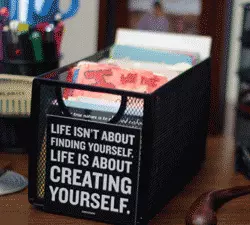
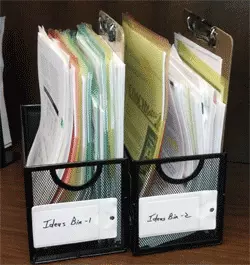
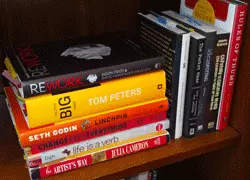
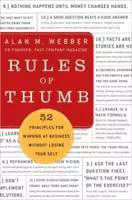 Rules of Thumb: 52 Truths for Winning at Business Without Losing Yourself
Rules of Thumb: 52 Truths for Winning at Business Without Losing Yourself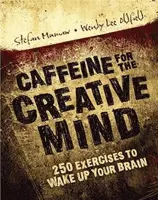 Caffeine for the Creative Mind
Caffeine for the Creative Mind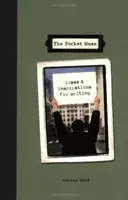 The Pocket Muse
The Pocket Muse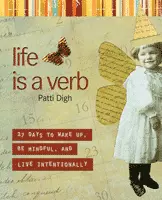 Life is a Verb
Life is a Verb